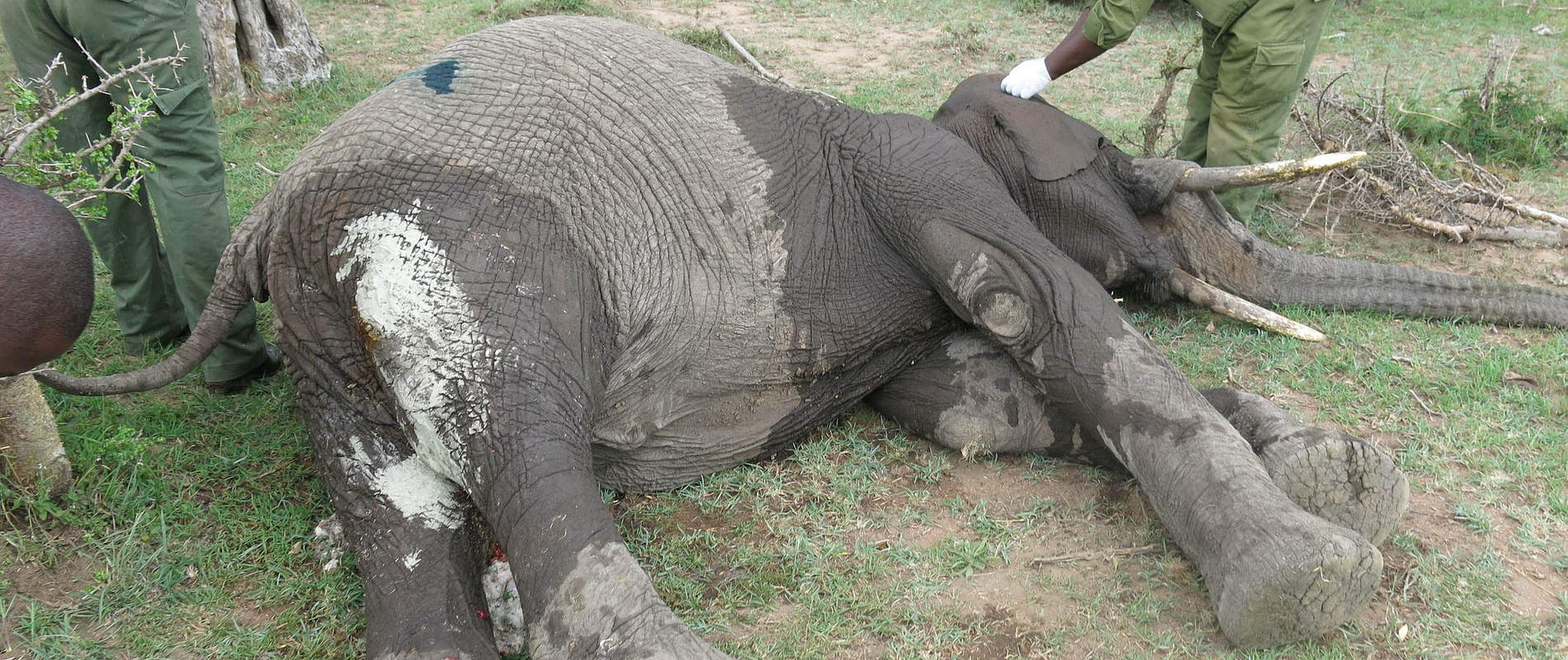Introduction The month experienced a good amount of rain with good forage and water for wildlife in the conservation area
Introduction
The month experienced a good amount of rain with good forage and water for wildlife in the conservation area. Cases of human wildlife conflict persist with a young elephant bull treated for a spear wound with favorable prognosis.
CASE 1 INJURED ELEPHANT
Date: 6th December 2017
Species: African elephant
Sex: Male
Age: Sub adult
Location: Olarro Conservancy
History
This young bull about 15 years was seen with a discharging wound on his right thigh by Olarro conservancy rangers on their normal patrols. They notified their management who requested our services for intervention. This young bull was with a big herd of elephants numbering almost 40.He was in good body condition save for a discharging wound on his upper right thigh.
Immobilization, examination and treatment
Restraint was achieved chemically by use of 10mgs etorphine hydrochloride delivered remotely through a 1.5ml daninject dart.Darting was carried out from a vehicle. It took eight minutes for the drugs to take full effect with this bull assuming left lateral recumbency. Examination revealed an approximately one-week old spear wound ventrally directed on his right thigh. This wound was getting septic. No foreign object was detected on probing.


An opening on the ventro-most point of the wound was created for maximum pus drainage and copious amount of water introduced dorsally and drained ventrally via through and through lavage technique. Hydrogen peroxide was applied for debridement and removal of dead tissue. Tincture of iodine was also applied as a disinfectant and finally green clay was packed to absorb toxins and promote healing. Other treatments include parenteral administration of amoxicillin antibiotic and flunixin meglumine anti-inflammatory.
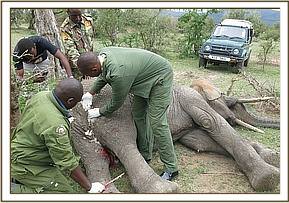

Reversal
Achieved by administration of 24mgs diprenorphine hydrochloride intravenously through a prominent ear vein. He woke up four minutes after reversal to join the rest of the herd.
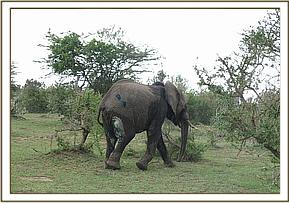
Prognosis
Good.
CASE 2 INJURED BULL ELEPHANT
Date: 8th December 2017
Species: African elephant
Sex: Male
Age: Adult
Location: Olkinyei Conservancy
History
This big bull in his early 50’s was seen with fresh injury on his left flank by Olkinyei conservancy rangers who informed their manager to contact the veterinary unit. This big bull was found with an equally big colleague wallowing. He had a fresh wound on his left flank and several old and healing wounds on his right flank, right shoulder and left leg. His body condition appeared to be good though.
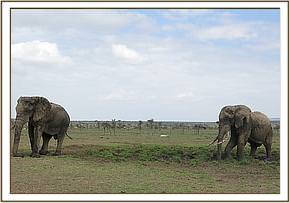

Immobilization, examination and treatment
Restraint was achieved chemically by use of 18mgs etorphine hydrochloride delivered through a 3ml daninject dart.Darting was done from a vehicle. It took eight minutes for the drugs to take full effect with this elephant assuming left lateral recumbency.
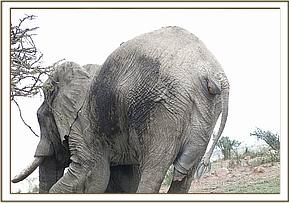

The wounds on the right side were attended to first before he was flipped over for further assessment and treatment of the wound on the right side. The old wounds, more than a month old appeared to have been caused by arrows. These wounds were slightly septic and were healing with granulation. They were opened and debrided with help of hydrogen peroxide. Tincture of iodine was infused to disinfect before oxytetracycline antibiotic being applied. The bigger and fresher of the wounds on the left flank appeared to have been caused by spearing and was about four days old. Luckily it did not penetrate into the peritoneum but damaged flank muscles. It was managed like the rest of the wounds and additionally packed with green clay.
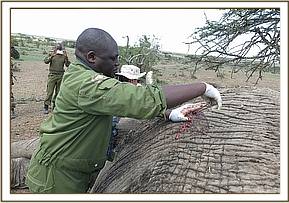

Other treatments include parenteral administration of 40000mgs oxytetracycline long acting antibiotic and anti-inflammatories.
Reversal
Done by use of 42mgs diprenorphine hydrochloride delivered intravenously through a prominent ear vein. He woke up in four minutes and joined his colleague.


Prognosis
Good.
CASE 3 SNARED GIRAFFE
Date: 9th December 2017
Species: Masai giraffe
Sex: Female
Age: Adult
Location: Kawaii
History
This adult female giraffe was seen with a snare round her neck by a team of game scouts at Kawaii area. They informed Mara triangle management who called the vet unit for help. This giraffe was seen in a herd of about twenty other giraffes with a wire snare round her neck. She appeared nervous on approach.
Immobilization and de-snaring.
Restraint was achieved by use of a combination of 12mgs etorphine and 60mgs azaperone delivered through a 3ml daninject dart. Darting was done from a vehicle and it took ten minutes for the drugs to take full effect. This giraffe was roped down and the wire which was loosely attached removed. No other injury was detected, and she was reversed.
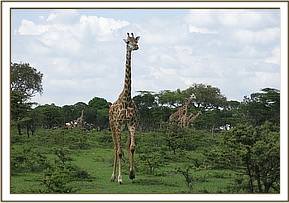

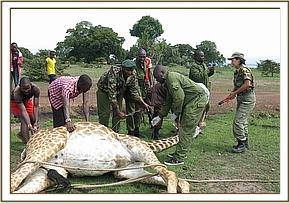

Reversal
Done by administration of 36mgs diprenorphine intravenously through the jugular vein. She woke up within two minutes of reversal to join her herd.
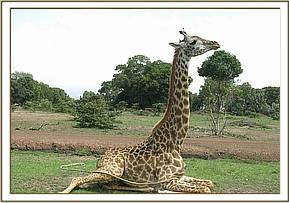

Prognosis
Good
